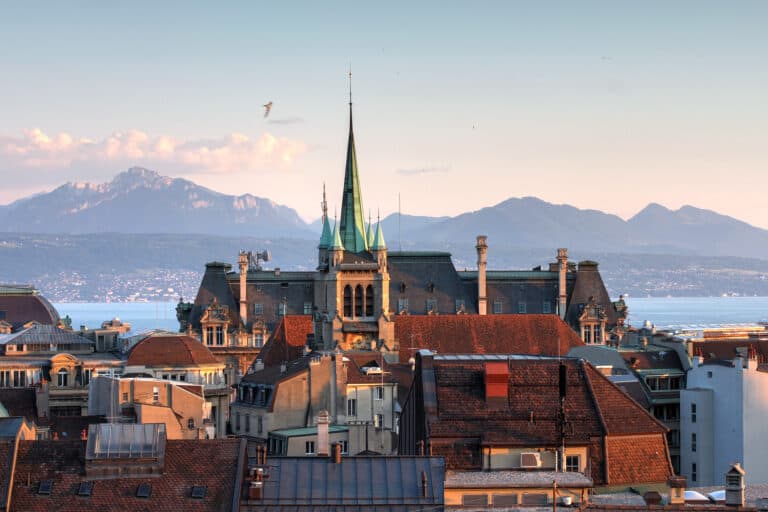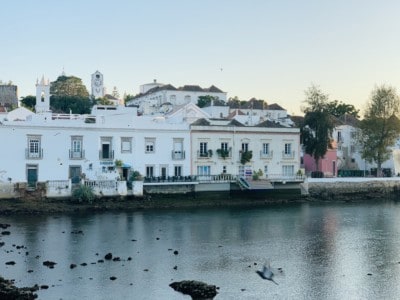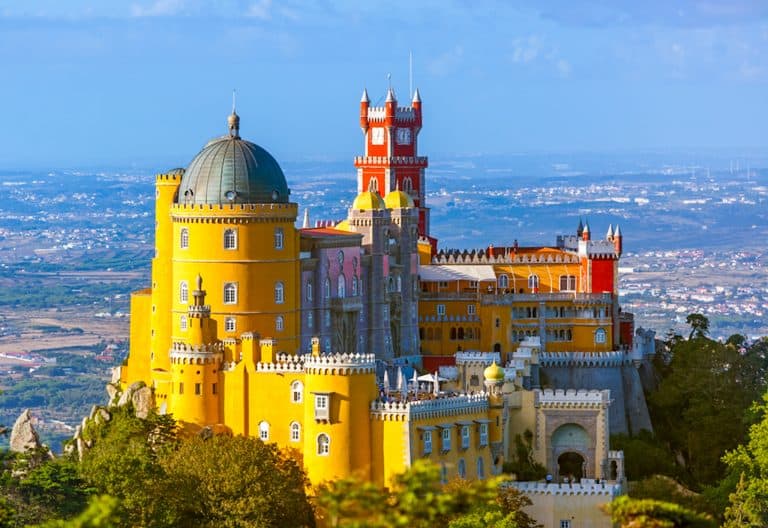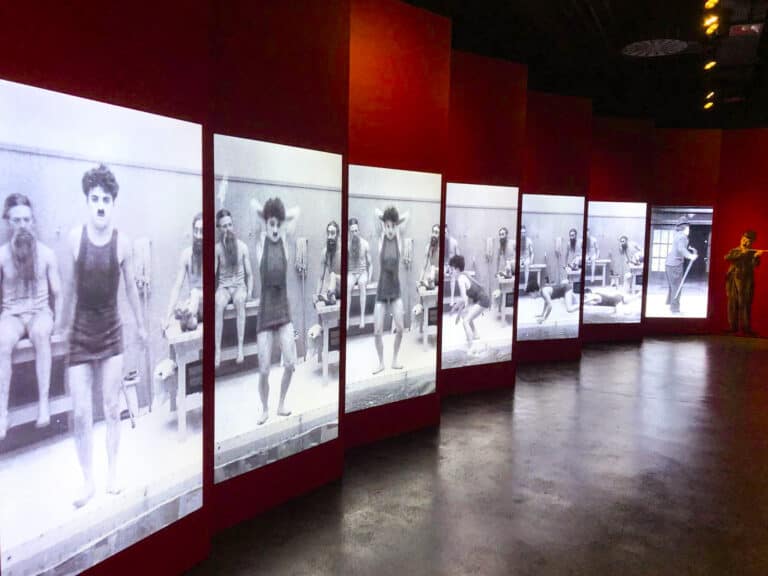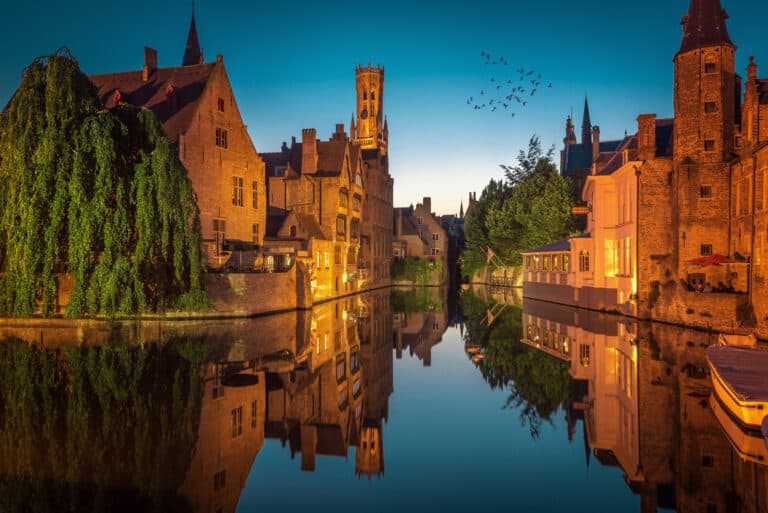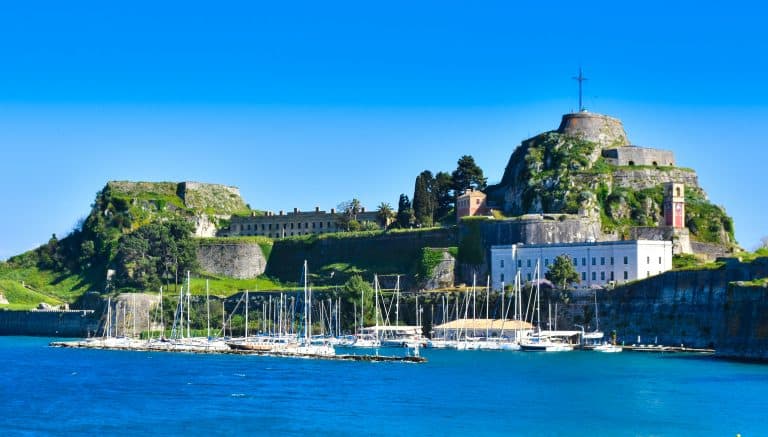2 days in Venice: the top things to put on your itinerary
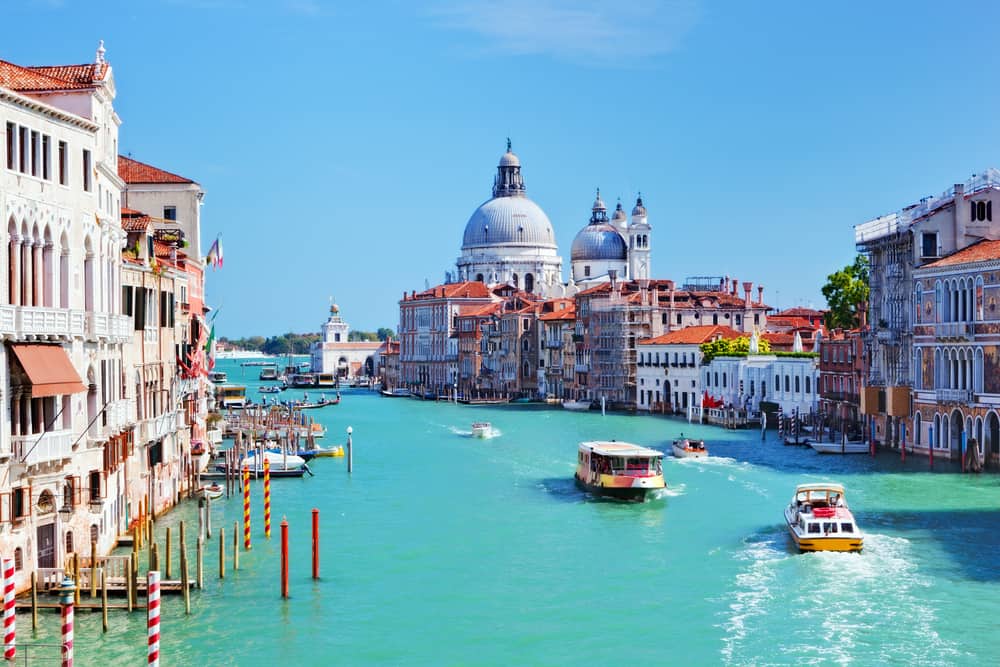
One of the most romantic cities in the world, Venice never seems to age. Riding high on the list of Italian tourist destinations, the city is packed full of architectural, artistic, culinary, and cultural delights.
It’s a city of canals, so is famous for its bridges and gondolas, waterside basilicas and bell towers, fine mansions and palaces, not to mention one of the most beautiful squares in the world! You’ll be spoilt for choice for sights to see on your 2 days in Venice.
This post outlines the main attractions and best things to put on your 2 days in Venice itinerary. If it’s your first trip here, you won’t be disappointed.
This post contains affiliate links
Where is Venice
Venice is in the north of Italy on the country’s eastern shoreline. It is around 70 miles from Verona (another city to put on your list if you’re looking for romance) and about 100 miles to Milan.
It is also only a short distance from the Italian Alps and the border with Slovenia.
How to get to Venice
Due to its immense popularity, Venice is well-serviced by air, rail, and road.
Most air passengers arrive at Venice’s main airport, Marco Polo airport, just over four miles to the north of the city. Treviso airport (officially known as Canova Airport) is also an option. This is 25 miles from the city centre.
How to get into Venice
Venice comprises 118 small islands located in a tidal lagoon. It has hundreds of canals (there are over 150!), which run under more than 400 bridges, and so the city has been designed around the pedestrian and cars and other large vehicles are banned from its historic core.
This means that there are some important considerations to take into account regarding transport connections. In particular, it means that if you are staying in the heart of the island city, and travelling in by car or bus, you may only be able to go to a certain point. After this, you will need to walk to your accommodation.
Buses and water buses
You can get the ATVO blue bus from Marco Polo airport into the city centre. This runs between the airport and Piazzale Roma and leaves around every 30 minutes. It takes 20 minutes.
Alternatively, bus number five also terminates at Piazzale Roma. This journey has more stops, and you are looking at a journey time of between 30 and 45 minutes.
You can also book bus transfers here.
If you fancy something different, there is the option of the water buses operated by Alilaguna. These are more expensive than the land buses, but a more novel way to travel, especially if this is your first time in the city.
The ATVO bus also runs from Treviso Airport to its final stop in Piazzale Roma, a journey of 70 minutes. Barzi buses also run between the city and the airport and are quicker (40 minutes) as they go via the motorway.
Taxis and water taxis
If you have cash to spare, you may want to consider picking up a taxi outside the airport. If you do, remember that if you are staying in Venice itself, vehicles don’t go any further than Piazzale Roma after which you will have to carry your luggage onwards.
Taxis will obviously be more expensive from Treviso airport than Marco Polo as it is further out from the city centre.
Alternatively, you could pick up a water taxi to take you closer to your accommodation. This will allow you to sail along some of the canals in Venice as soon as you arrive but it can be expensive. You can book a water taxi from Marco Polo airport here.
How to get around Venice
There are two main ways to get around the central part of the city.
Walking and walking tours
The city’s car-free policy is something to be treasured. Walking is therefore a great way to get around.
You can do this independently, adding on boat trips to some of the other places I’ve outlined for your 2 days in Venice.
If you also want to come away with a sound knowledge of Venice’s history and its landmarks, you can book yourself on a walking tour during which a local guide who will give you a potted version of the history of Venice.
To explore and book a guided tour, click here.
On the water
Given that Venice is comprised of more than 100 islands, you can also get around on the water.
The Vaporetto
The best way to get around on public transport is via the Vaporetto, the city’s water bus.
There are many Vaporetto lines, but one of the most important for tourists is line 1. This runs between Piazzale Roma and the Lido bathing resort and includes several other landing stations in both directions that will be useful for you when sightseeing.
When you arrive at the landing stations dotted around the canal’s waterfront, you will see the ticket booths from which you can purchase your tickets. Failing that, you can also buy tickets as you board.
Think about how often you plan to use the Vaporetto because, cost-wise, it might be more economical to purchase a Travel Card.
This 2 day travel card can work out better value for money for your 2 days in Venice. The ticket includes the water buses in the centre of the Venice and out to the Lido and some nearby islands. It also includes some land buses.
The card costs just over three times the price of a single journey so if you plan to hop on and off multiple buses, it’s worth the cost.
Gondolas
Of course, a visit to Venice would not be complete without the obligatory ride on a gondola. This is a must for all true romantics.
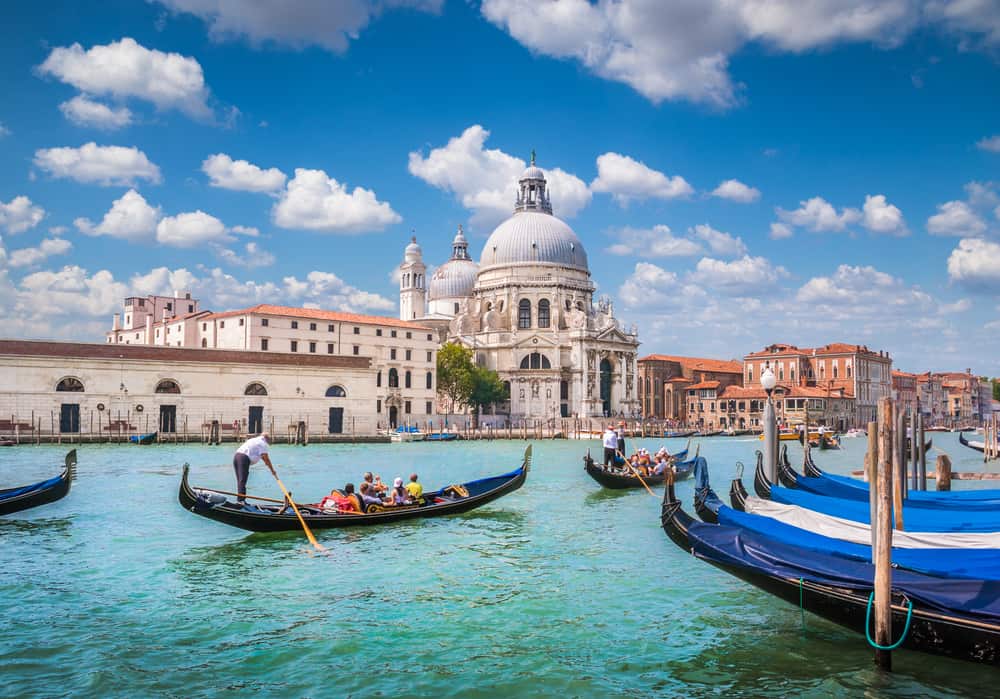
Due to the nature of Venice’s geography, you’ll only get to see a fraction of the city’s historic centre in the time you have (see further down), but it will give you a really good feel for this spectacularly beautiful place.
The best time to visit Venice
Summer in Venice
Weather-wise, the best time of year to visit Venice is in the summer months. Note, however, that it can get hot: temperatures can climb to the high 20s in centigrade in July and August.
Summer is also when several events take place, and the city is vibrant and comes alive.
In July, the locals enjoy the canal-side fireworks as part of the Festa del Redentore (the Feast of the Redeemer). A temporary pontoon bridge is rolled across the Giudecca Canal to the Church of the Santissimo Redentore (Il Redentore) for locals and tourists alike to walk back and forth.
And for film buffs, late August into early September marks the arrival of the Venice Film Festival when the industry’s hottest property rolls into town for the red carpet treatment.
The downside of visiting in the summer months is that this is the high season. As the weather improves so the price of a hotel room can rise accordingly. Venice isn’t cheap, and eating out can be particularly expensive at this time of year.
If you want to visit at this time of year, you can help keep the costs down by avoiding the obvious tourist traps like eating out in the main central areas or having tea/coffee and cake in St Mark’s Square where prices are higher.
Autumn and winter in Venice
The autumn and winter months – with the exception of the school holidays, Christmas, and the New Year festivities – are also good times to visit, and prices are generally lower than in the peak season. Apart from a few notable dates in the calendar, footfall is also considerably lower than during the busier, warmer months, which some people will find preferable.
However, it can be cold (although temperatures tend not to go into minus figures) and heavy rain is a possibility at times during this period. Venice is prone to flooding, known as acqua alta (“high water”). This is an inevitable result of rising sea levels in a tidal lagoon – so be aware that your best-made plans could go awry if it rains heavily. St Mark’s Square is particularly susceptible to flooding.
Christmas can be a magical time to visit Venice. There are markets to explore, ice rinks to skate on, and the area around the Rialto Bridge is particularly atmospheric with its festive lights.
February is also the time to come if you want to enjoy Carnevale. In the weeks running up to Lent, the streets are filled with colourful mask wearers, and a flotilla can be seen gliding gracefully along the Grand Canal.
The top things to do in 2 days in Venice
There’s plenty of fascinating things to see and do in Venice to keep you occupied on a short break.
Below is a list of the main things to put on your itinerary for 2 days in Venice. I have also included a 2 day itinerary at the end of the post.
Wander around St. Mark’s Square (Piazza san Marco)
A visit to Venice would not be complete without a wander around St Mark’s Square and exploring inside the adjacent basilica. As St. Mark’s Square is Venice’s main square, it is the city’s beating heart and is arguably the key place to head to for your first day of sightseeing.
With St. Mark’s Campanile (the Campanile di San Marco), the basilica’s pencil-like bell tower standing sentry over its vast expanse, you can’t help but be impressed with the visual splendour right in front of you.
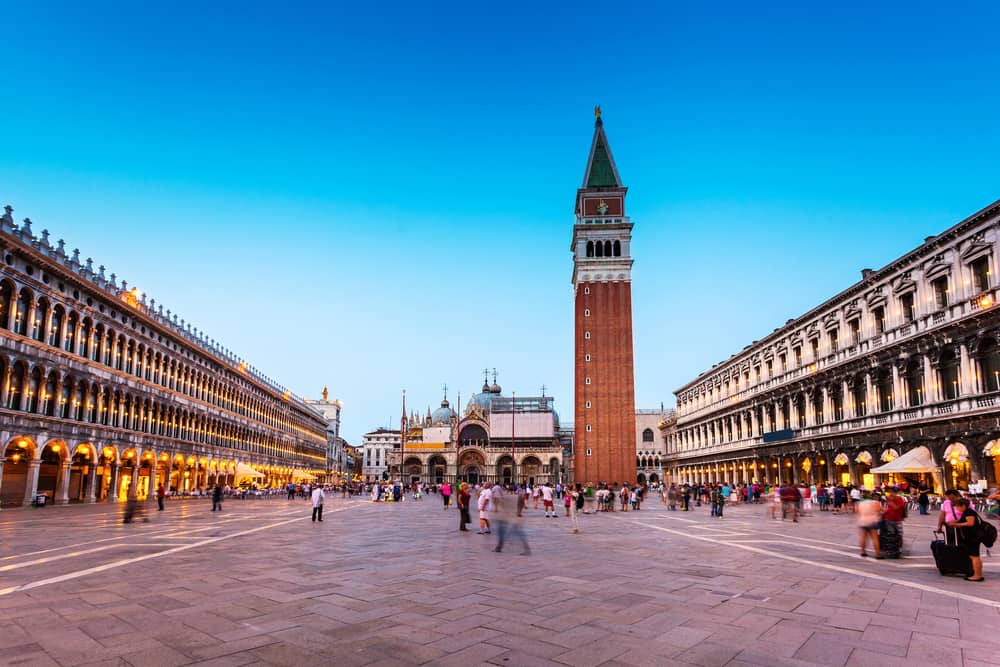
The large sweeping square is surrounded on three sides by elegant historic buildings. But the best view by far is of the basilica’s Byzantine domes and portals and the Campanile on the fourth side.
The car-free policy also means you should be able to take some scenic shots without any visual obstructions getting in the way. Make sure you spend some time wandering around the square and through the beautiful arcades beneath the historic buildings lining its sides.
Note that St. Mark’s Square’s close proximity to the quayside means it is within each reach of the water. Although the big cruise ships have now been banned from coming into the centre of Venice, the city is still a huge tourist destination, with people arriving daily by boat. So you might want to visit the square early in the morning or later at night when it is not so crowded.
Also note that in winter, when it can rain heavily, the square has flooded in the past. Having said that, on a bright clear day, if the flooding isn’t too deep, you can get some amazing photos of the basilica and Campanile reflected in the water.

Go into St. Mark’s Basilica (the Basilica di San Marco)
If you have time while you’re in St. Mark’s Square, pop into the stunning Saint Mark’s Basilica. This was built in the 9th century to house the Saint’s remains and was originally the private church for the city’s leaders.
Unsurprisingly, a visit to the basilica is popular. Queues, especially in peak season, can therefore be long. However, if you want to optimise your time on your 2 days in Venice, you can also book tickets that allow you to skip the line and provides you with an audio guide for your visit.

Before entering, take some time to admire the façade of this historically significant building, one of Venice’s most spectacular landmarks. The architectural artistry and intricate, lavish designs, which include arched portals, beautifully decorated pillars, and eye-catching gold mosaics that shimmer in the sunlight, are magnificent.
The basilica has three facades – the north (facing Piazzetta dei Leoncini), the south (facing the Grand Canal), and the west (overlooking St. Mark’s Square). Each offers something unique in its design, so try to take a look at all parts of the outside.
Once inside, you will be even more astounded. The internal layout follows the design of the Greek cross, and everywhere you look around, there is Christian artwork that is breathtaking in its level of detail.
The sheer opulence of the interior is quite something. The inside of the five massive domes are covered from head to foot in gold mosaics, and the floor, all 2,099 metres of it, is covered in marble.
Two of the domes are particularly noteworthy – the Ascension dome (with Christ in the circle) and the Pentecost dome, also known as the Dome of the Holy Spirit.
While inside, also make sure you see the Pala d’Oro, (the Altarpiece) and look around St Mark’s Museum next door.
Climb the Campanile
If you have time, there’s also the Campanile or bell tower to climb while you’re here. This stands in front of St Mark’s Basilica. The current tower’s design dates from the 16th century and it was then rebuilt in the early 20th century after it had collapsed.

The Campanile is 99 metres tall and is the tallest building in Venice. It’s therefore one of the best places to look out over the city. The views over Venice, the lagoon and its islands, and the mainland from the bell tower are not to be sniffed at.
Visit the Doge’s Palace (Palazzo Ducale)
A few minutes’ walk away from the Byzantine splendour of St Mark’s Basilica, you will find the Doge’s Palace, a treasure trove of Venetian art, culture, and history. Built in the Venetian Gothic style and overlooking the Grand Canal, this popular Venice attraction is spread over three wings.
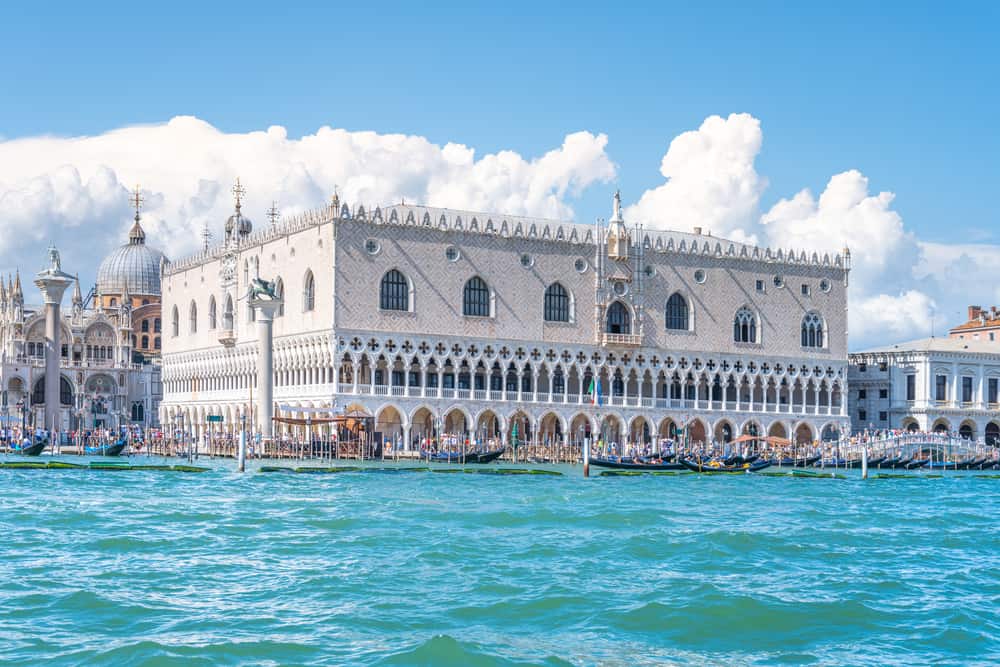
The palace was the one-time residence of the Doge, the city’s highest leader between the 8th and 18th centuries.
You can now go into it and explore its interior. This includes going into the Doge’s Apartments and the institutional chambers from which Venice’s judicial and political administrations operated. There is also a prisons section and an armoury section.
The palace is large, and there is a lot to see and do here so try to devote enough time to your visit if this is something you’re really interested in.
You can book tickets to the palace here.
Exploring the Doge’s Palace
You reach the Doge’s Apartments via the Stairs of the Censors, where you can explore the rooms in this section of the palace. These rooms have beautiful wooden ceilings and marble decorations.
You can then head up to the institutional chambers via the fabulous Gold Staircase. Start in the Square Atrium, an antechamber that houses Girolamo Bassano’s The Angel appearing to the Shepherds. You can’t fail to be impressed by the striking beauty of the rooms that follow, and you can read more about them all here.
The Doge’s Palace’s courtyard is also worth exploring, not least because it offers good views of part of St. Mark’s Basilica. The Giant’s Staircase is impressive, as are the statues of Mars and Neptune.
You can also see the armoury’s collection of weapons and the prisons on your tour of the palace (some of the latter are linked to the palace via the Bridge of Sighs and which you can see on a tour).
The Doge’s Palace is open from 9 am to 6 pm every day, with the last entrance at 5pm.
Admire the Bridge of Sighs (the Ponte dei Sospiri)
Another must-see sight in Venice is the Bridge of Sighs, the city’s second most famous bridge after the Rialto. This is a small pretty 17th-century bridge that is enclosed and spans the Rio di Palazzo canal.
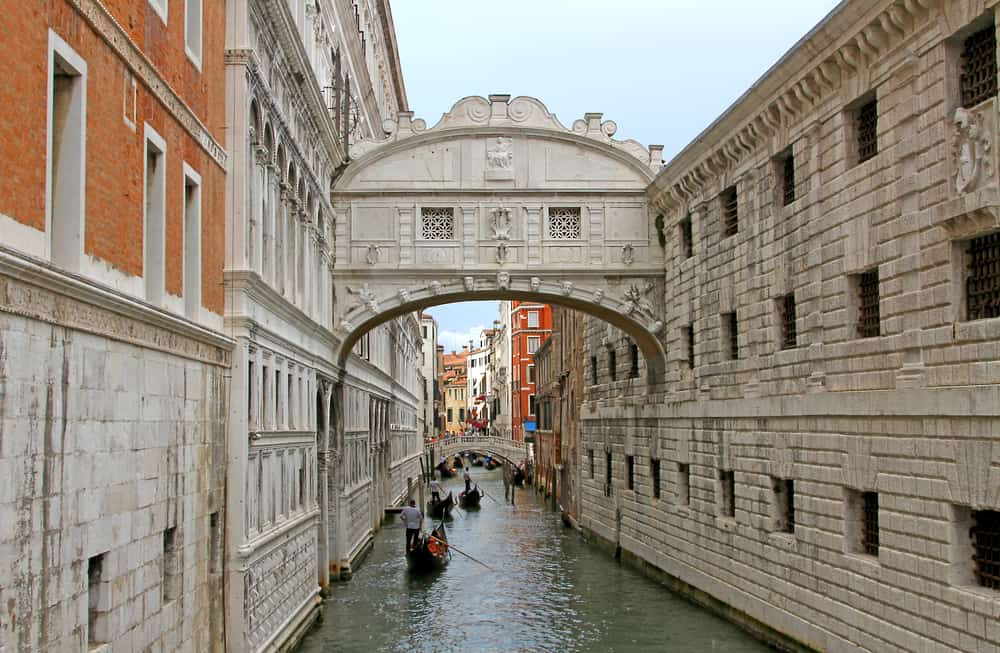
The bridge connects the Doge’s Palace to the nearby prison and was used to take prisoners to their cells. On a tour of the Doge’s Palace, you can also see the inside of this bridge.
You can also admire the Bridge of Sighs when you walk on from the palace alongside the quayside (when you are standing outside with your back facing the Grand Canal, you will see a smaller waterway to the right of the palace).
However, if you want to get up close for really good photos, the best option is to book a gondola ride that will take you up and under it.
Stroll along the Grand Canal and cross its four bridges
For such a walkable city that also happens to be traffic free, a stroll along the streets that meander around and alongside the famous Grand Canal is highly recommended and is a great way to soak up the sights.

The canal weaves its way through the city centre, and along the way you will pass through numerous squares and see beautiful mansions and countless churches. There is no shortage of places to stop off for a bite to eat and something to drink. If you are sitting by the canal, you should even be able to snap some photos of gondolas gliding gently past.
If you plan your route, you can also make sure it includes the four bridges that cross the Grand Canal (the Ponte di Rialto, Ponte dell’ Accademia, Ponte degli Scalzi and Ponte di Costituzione) and the sights near to these.
The arched Rialto Bridge (Ponte di Rialto) is particularly stunning and is the oldest of all four. If you only have time to walk across one, this should be it.

There is also the gothic-designed Ca’ d’Oro Palace with its collection of art; the baroque Ca’ Rezzonico, another palace and art museum; the Peggy Guggenheim Collection; and the awe-inspiring Chiesa di Santa Maria della Salute, a 17th-century domed church. The adjacent Punta della Dogana is a former customs warehouses that now showcase art exhibits.
Alternatively, you can take to the water and the route taken by the Vaporetto line 1 as the water bus stops at all of the main sites along the Grand Canal.
Go to the Rialto market
In a city where pretty much all of the fresh produce has to be brought in by boat and locals can only stock up from small grocery outlets, the Rialto market is definitely a place to visit to see some vibrant city life.
I love wandering around the local markets when I’m away, so if you’re like me, you’ll enjoy having a quick peek inside. You can also pick up some tasty snacks to keep you going while you sightsee around the city.
Located in Venice’s San Polo district, the market can be found near the Rialto Bridge, right next to the Grand Canal.
The fruit and veg market runs from Monday to Saturday, and the fish market from Tuesday to Saturday, both from 7.30 am.
Take a romantic gondola ride
One of the most iconic images that Venice conjures up is that of gondoliers taking couples on a romantic gondola ride down the Grand Canal or through the labyrinth of smaller waterways. Venice is a perfect place for a romantic break and to have a gondola ride on what is often referred to as a “floating city”.
A trip on the Grand Canal is a great thing to do. However, it’s also interesting to sail through the back canals. These are much quieter and preferable in many ways as the gondola isn’t competing with other traffic on the water. You also get to see a bit of the real Venice, where the locals live away from the glitz and glamour of the main sights and thoroughfares.
Gondolas can hold five or six people. If there are only two of you and you don’t mind sharing the gondola ride, you can find other travellers to join you without having to pay any extra, and that way it’s a bit cheaper.
You can choose from the different types of gondola rides here: from private rides to shared rides, evening and sunset rides, and romantic trips with prosecco. You can also book tours that combine a walking tour of the main sights with a short trip on a gondola.
Tour the Teatro La Fenice
Italy is synonymous with opera, so if you get the chance, you should definitely visit the spectacular Teatro La Fenice. Even if you don’t have time to catch a performance – the opera season runs only during certain months of the year – or opera isn’t something you particularly enjoy, you should definitely consider a tour of this magnificent building.
On a tour, you will see the interior’s dazzling gold and stucco furnishings and learn about the theatre’s history, which dates back to 1792, the opera stars that have graced its stage, and some of the renowned building’s little-known secrets.

Sail over to the local islands
It’s often easy to forget when you go to Venice that there are some nearby islands you can also visit. In fact, the Vaporetto water bus service connects the city to more than 10 islands in the Venetian lagoon.
The most popular destination for tourists is the nearby island of Murano, well known for its glass production. Around one mile from Venice, the island isn’t very big, and you can walk around the main sights very quickly. Make sure you visit the Museo del Vetro to learn more about glass blowing.
If you do visit Murano, it might also be worth considering extending your trip to take in Burano and Torcello, two other islands in the Lagoon. There is a guided boat trip that covers all three islands, which is worth looking into.
Burano is known for its lace – check out the Museo del Merletto – and is also where you’ll see brightly coloured houses. While here, you can also pop over a tiny bridge to the island of Mazzorbo.
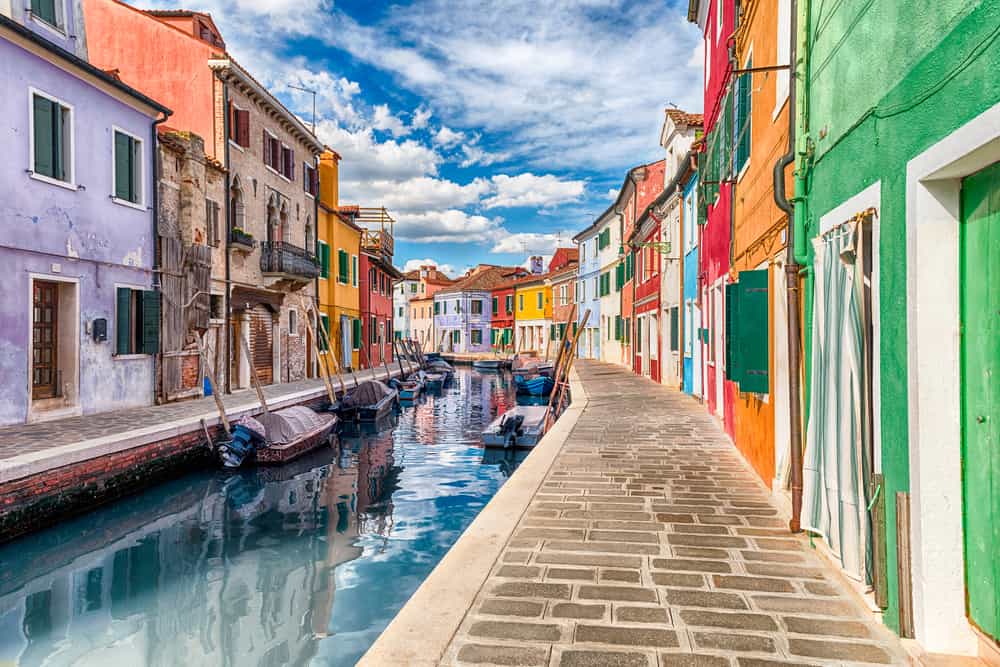
We went to Burano many years ago, and the pace of life is slower and more relaxing, and there were some great eateries. It was definitely worth a few hours of our time.
Visit the Isola di San Giorgio Maggiore
As you stand on the quayside near St. Mark’s Square and look out over the Grand Canal, you will see a small island a short distance away with a similar-looking bell tower to the Campanile standing over a basilica.

This much-photographed image of Venice is the Isola di San Giorgio Maggiore, and you can reach it with the San Giorgio water bus (line 2 during the day and N at night).
The San Giorgio Maggiore basilica was constructed with white marble and completed in the late 16th century. Inside you can look at its collection of fine paintings, including works by Tintoretto and Ricci.
Not quite as tall as the Campanile in St. Mark’s Square, the basilica’s bell tower is definitely worth visiting because the views of Venice from the top are absolutely amazing. You can reach the bell tower’s observation deck via a lift.
View some art
If you’re an art lover, you’ll love the fact that Venice is home to some first-class art museums.
There are many places to visit in the city. However, two of the very best are the Gallerie dell’Accademia and the Peggy Guggenheim Collection. These can be found in the Dorsoduro district and are within a short walk of each other.
The Gallerie dell’Accademia stands facing the Ponte dell’Accademia and is an art enthusiast’s heaven. Inside the gallery, you can marvel at four centuries of Venetian art up to the 18th century – it has “the largest collection of Venetian art in the world”. You can peruse works by the likes of Bellini, Canaletto, da Vinci, Titian, and Veronese, among others.
You can visit the museum every day of the week, although note that it closes early on a Monday (at 2pm).
In stark contrast, Peggy Guggenheim’s huge collection of modern artworks caters to more abstract expressionist, futurist and surrealist tastes. Housed in the Palazzo Venier dei Leoni, where she once lived, you can find works by Jackson Pollock, Picasso, Kandinsky, and Salvador Dali to name a few.
The museum is open every day except Tuesdays.
Chill out on the beach
During the height of summer, thousands of bathers descend on Venice’s beaches. This might seem an odd concept as you walk around Venice’s narrow streets with not a single stretch of sand in sight. But it’s a great place to get away from the main part of the city, see Venice from a different perspective, and have some rest and relaxation.
If you do fancy a trip to the beach, you’ll need to travel out from the historic centre. There are several options you can choose from. However, if your time is limited and you want to get to the beach quickly, the Lido is the most popular and well-known destination. It’s only about 20 minutes away by water bus.
The seven mile long island is located south of Venice, and its beaches line the southern side facing the Adriatic Sea. Bear in mind that only a handful of Lido beaches are free to use (many are private and attached to the hotels here) so plan ahead if you want to pop to the beach while you’re on your short break. Check out this website to help with your planning.

Wonder at the inventions in the Leonardo da Vinci Museum
Another top attraction to consider for your itinerary is the Leonardo da Vinci Museum. Here you can find out more about the life and works of this celebrated Italian genius.
You can see his paintings and sculptures, as well as some of his inventions and work covering his other talents in the areas of engineering, mathematics, and music.
The museum showcases reproductions of his most well-known paintings, and you can also enjoy an interactive exhibition that faithfully reconstructs some of his most notable inventions.
The museum is open every day.
Visit Venice’s Jewish Ghetto
To the east of the train station (Santa Lucia train station), you will come across the district of Cannaregio, home to Venice’s Jewish community. The Jewish Ghetto – apparently the oldest in the world – is only one part of this interesting district. Other sights worth adding to your to-do-list include the gothic Madonna dell’Orto church, where Venetian painter Tintoretto is buried.
The Jewish community, which once thrived in this neighbourhood before the Second World War and the Holocaust, resides in an area known as Ghetto Nuovo. Despite the Holocaust, the community still has a visible presence. There are a handful of synagogues, and you can try some Jewish delicacies in a number of eateries.
The Jewish Museum of Venice is also here, where you can learn more about the community’s long ties with the city.
If this is something you’re interested in, this walking tour of the Jewish Ghetto is worth considering. It lasts for two hours, and a tour guide will take you to the main points of interest and give you information on the area’s history.
Step into the quirky Libreria Acqua Alta
Located in the Castello district, the Libreria Acqua Alta is a treasure trove of a bookstore. The English translation is the “Book Store of High Water”, which reflects (no pun intended) the fact that Venice often floods, putting the huge collection of books, magazines, maps, and other items at risk.
To protect this precious collection, the owners have resorted to unique and quirky ways of storing them: they’re stacked up in bathtubs, tins, and even a full-size gondola to stop them from getting damaged. Come and take a look and possibly buy something at the same time.
2 days in Venice: your 2 day itinerary
Below is an itinerary for 2 days in Venice. I have included the main things to see and do here, but you can swap in other things depending on your specific interests and the time of year you visit (or maybe even extend your trip to 3 days!).
There’s a lot to cram in over 2 days, so if you can, start early! The morning on day is especially full, but it makes sense to see everything around St. Mark’s Square at the same time. I’d therefore plan for a late lunch this day to optimise your time here.
2 days in Venice: an itinerary
Day 1
Morning: Start your sightseeing in St. Mark’s Square. Wander around the square, go inside the basilica, and climb the tower. Then head to the nearby Doge’s Palace. Explore the wonderful rooms here, and see the Bridge of Sighs.
Afternoon: After a late lunch, walk to the Venice Opera House and tour inside. End your day by seeing some of Venice from the water: take a ride on a gondola or hop on one of the city’s water buses
Day 2
Morning: Take a walk along the Grand Canal, go over the Rialto Bridge, and pop into the nearby Rialto market. Then head to one of the city’s fantastic art galleries.
Afternoon: After lunch, head off to the Venice Lido, sail out to one of the nearby islands, or explore the Jewish Ghetto.
Other Italian and European short breaks
For more ideas for short breaks in Italy and Europe, see my website. I have posts on a short break to the Italian Lakes, a weekend in Verona, as well as short breaks in France: 2 days in Lyon, the top things to do in Menton, a day trip to the Palace of Versailles, and a visit to the chateaux of the Loire Valley.
I also have posts on trips to the top cities in Switzerland, and to a range of other places in Europe and the UK.

